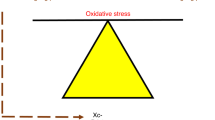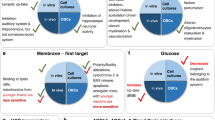Abstract
Bilirubin is toxic in most biological systems tested. Several mechanisms have been suggested for this toxic effect, including inhibition of enzyme systems and inhibition of cell regulatory reactions (protein/peptide phosphorylation). The identity of the basic mechanism(s) has not been conclusively proven, but inhibition of peptide phosphorylation, perhaps mediated or modulated by lysine at the active site(s), appears to be compatible with many of the observations currently found in the literature. Bilirubin entry into brain is facilitated by drug displacement of bilirubin from its albumin binding, reduced albumin binding capacity, increased brain bloodflow, increased permeability of the blood–brain barrier, and other factors. The rate of bilirubin entry into brain, as well as the degree of retention and rate of clearance from brain, depends on which of these circumstances are operative. It is as yet unclear whether the mechanism responsible for increased brain bilirubin is important for toxicity. The mechanism for preferential localization of bilirubin to the basal ganglia in kernicterus is also not known. Bilirubin appears to distribute differentially to brain subcellular compartments and is oxidized in brain by an enzyme localized on the inner mitochondrial membrane. This enzyme is found both in neurons and in glia, but appears to be more active in the latter. The activity increases with postnatal age, and is subject to genetic variability in animals. The enzyme is cytochrome c–dependent. It is as yet not clear whether the activity of this enzyme serves a brain-protective effect in severe hyperbilirubinemia.
This is a preview of subscription content, access via your institution
Access options
Subscribe to this journal
Receive 12 print issues and online access
$259.00 per year
only $21.58 per issue
Buy this article
- Purchase on Springer Link
- Instant access to full article PDF
Prices may be subject to local taxes which are calculated during checkout
Similar content being viewed by others
References
Hansen TWR Pioneers in the scientific study of neonatal jaundice and kernicterus Pediatrics 2000 106 e15 URL: http://www.pediatrics.org/cgi/content/full/106/2/e15
Hansen TWR, Bratlid D Bilirubin and brain toxicity Acta Paediatr Scand 1986 75 513–22
Hansen TWR The pathophysiology of bilirubin toxicity In: Maisels MJ, Watchko JF, editors. Neonatal Jaundice London: Harwood Academic Publishers 2000 p. 89–104
Morphis L, Constantopoulos A, Matsaniotis N, Papaphilis A Bilirubin-induced modulation of cerebral protein phosphorylation in neonate rabbits in vivo Science 1982 218 156–8
Hansen TWR, Bratlid D, Walaas SI Bilirubin decreases phosphorylation of synapsin I, a synaptic vesicle-associated neuronal phosphoprotein, in intact synaptosomes from rat cerebral cortex Pediatr Res 1988 23 219–223
Hansen TWR, Paulsen O, Gjerstad L, Bratlid D Short-term exposure to bilirubin reduces synaptic activation in rat transverse hippocampal slices Pediatr Res 1988 23 453–6
Roseth S, Hansen TWR, Fonnum F, Walaas SI Bilirubin inhibits neurotransmitter uptake in isolated presynaptic vesicles Pediatr Res 1998 44 312–6
Hansen TWR, Mathiesen SB, Sefland I, Walaas SI Bilirubin inhibits Ca ++-dependent release of norepinephrine from permeabilized nerve terminals Neurochem Res 1999 24 733–8
Hansen TWR, Mathiesen SBW, Walaas SI Bilirubin has widespread inhibitory effects on protein phosphorylation Pediatr Res 1996 39 1072–7
Hansen TWR, Mathiesen SBW, Walaas SI Modulation of the effect of bilirubin on protein phosphorylation by lysine-containing peptides Pediatr Res 1997 42 615–7
Orth J Ueber das Vorkommen von Bilirubinkrystallen bei neugeborenen Kindern Virchows Arch Pathol Anat 1875 63 447–62
Schmorl CG Zur Kenntnis des Ikterus Neonatorum, insbesondere der dabei auftretenden Gehirnveränderungen Verh Dtsch Pathol Ges 1904 6 109–15
Hansen TWR, Cashore WJ, Oh W Changes in piglet auditory brainstem response amplitudes without increases in serum or cerebrospinal fluid neuron-specific enolase Pediatr Res 1992 32 524–9
Hansen TWR Bilirubin in the brain. Distribution and effects on neurophysiological and neurochemical processes Clin Pediatr 1994 33 452–9
Hansen TWR, Øyasæter S, Stiris T, Bratlid D Effects of sulfisoxazole, hypercarbia, and hyperosmolality on entry of bilirubin and albumin into brain regions in young rats Biol Neonat 1989 56 22–30
Hansen TWR Acute entry of bilirubin into rat brain regions Biol Neonat 1995 67 203–7
Hansen TWR, Cashore WJ Rates of bilirubin clearance from rat brain regions Biol Neonat 1995 68 135–40
Hansen TWR Bilirubin entry into and clearance from rat brain during hypercarbia and hyperosmolality Pediatr Res 1996 39 72–6
Hansen TWR, Tommarello S, Allen JW Subcellular localization of bilirubin in rat brain following in vivo iv administration of 3H-bilirubin Pediatr Res 2001 49 203–7
Wennberg RP, Hance AJ Experimental bilirubin encephalopathy: Importance of total bilirubin, protein binding, and blood–brain barrier Pediatr Res 1986 20 789–92
Hansen TWR, Allen JW Hemolytic anemia does not increase entry into, nor alter rate of clearance of bilirubin from rat brain Biol Neonat 1996 69 268–74
Hansen TWR, Maynard EC, Cashore WJ, Oh W Endotoxemia and brain bilirubin in the rat Biol Neonat 1993 63 171–6
Brodersen R, Bartels P Enzymatic oxidation of bilirubin Eur J Biochem 1969 10 468–73
Hansen TWR, Allen J Bilirubin-oxidizing activity in rat brain Biol Neonat 1996 70 289–95
Hansen TWR Bilirubin oxidation in brain Mol Genet Metab 2000 71 411–7
Author information
Authors and Affiliations
Rights and permissions
About this article
Cite this article
Hansen, T. Bilirubin Brain Toxicity. J Perinatol 21 (Suppl 1), S48–S51 (2001). https://doi.org/10.1038/sj.jp.7210634
Published:
Issue Date:
DOI: https://doi.org/10.1038/sj.jp.7210634
This article is cited by
-
Molecular events in brain bilirubin toxicity revisited
Pediatric Research (2024)
-
Turn-Off Fluorometric Determination of Bilirubin Using Facile Synthesized Nitrogen-Doped Carbon Dots as a Fluorescent Probe
Journal of Fluorescence (2024)
-
Models of bilirubin neurological damage: lessons learned and new challenges
Pediatric Research (2023)
-
Extracorporeal liver support techniques: a comparison
Journal of Artificial Organs (2023)
-
Pinocembrin pretreatment counteracts the chlorpyrifos-induced HO-1 downregulation, mitochondrial dysfunction, and inflammation in the SH-SY5Y cells
Metabolic Brain Disease (2021)



